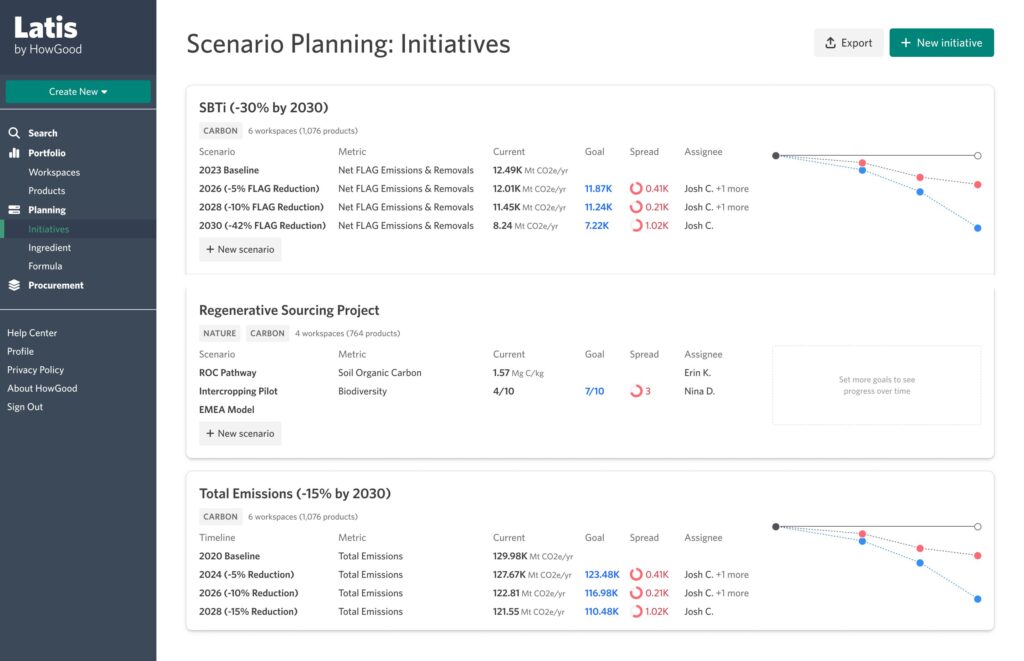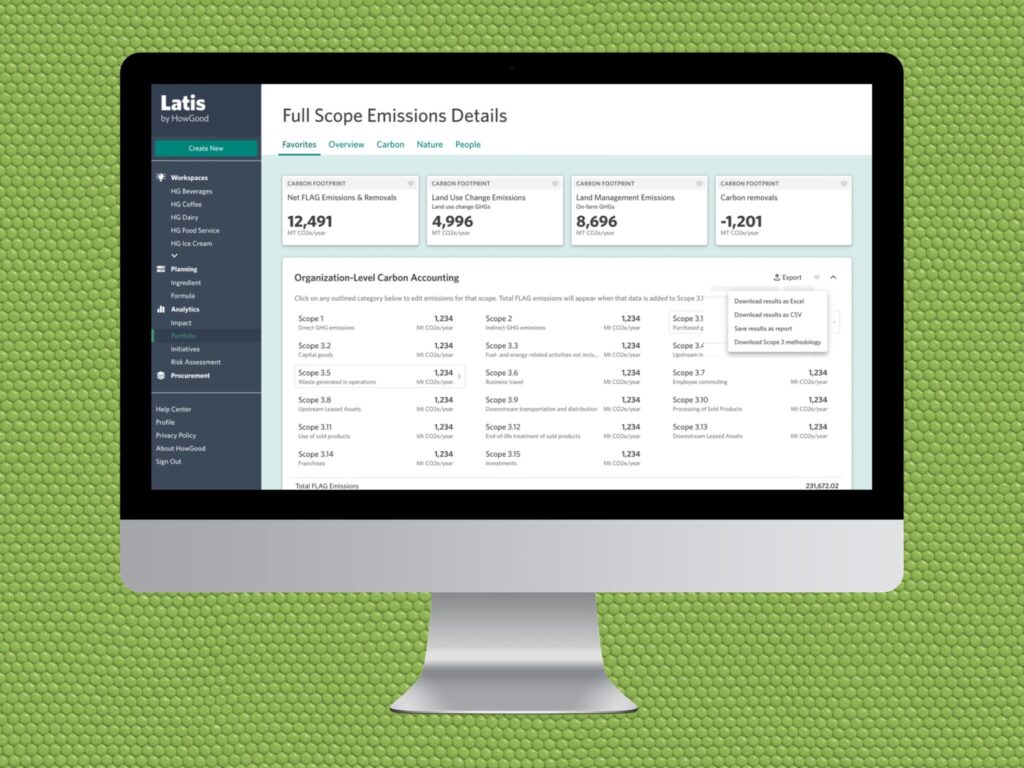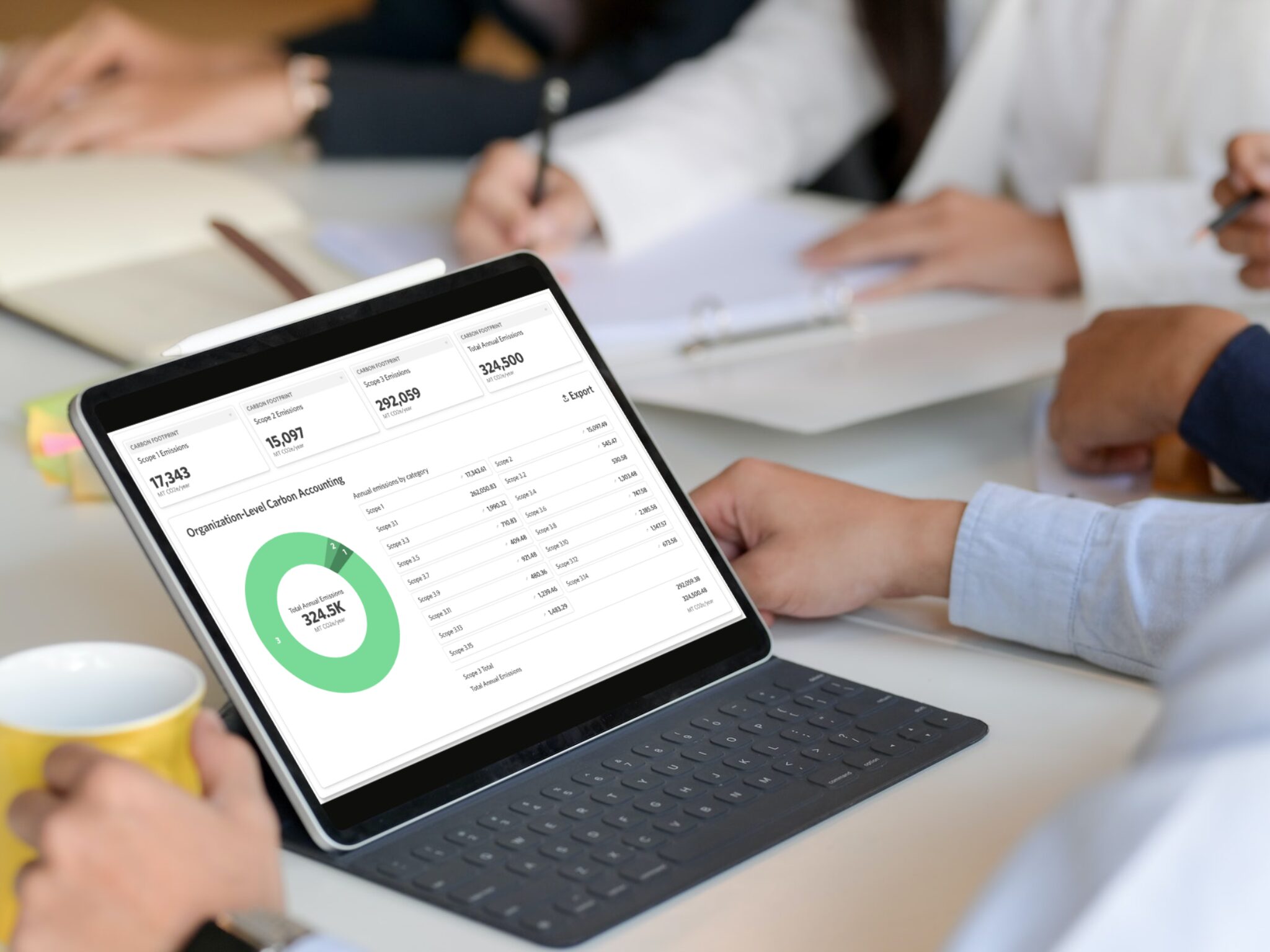How This Carbon Calculator is Helping Food Companies Better Report & Reduce GHG Emissions
5 Mins Read
New York-based sustainability research firm HowGood recently expanded its product carbon footprinting solutions to streamline corporate accounting and GHG reduction for the food industry. Its head of product, Nina DePalma, outlines the why and the how.
Last month, HowGood expanded its Scope 3 granular carbon accounting platform to include Scopes 1 and 2, providing enterprise food companies with an accurate reflection of their corporate footprint and helping streamline ESG reporting and reduce greenhouse gas emissions.
The company’s Latis platform, which it says is used by six of the world’s 10 largest food companies, draws on over 600 data sources to assess the impact of more than 33,000 ingredients. And to prevent barriers to efficient impact reduction, Scopes 1 and 2 are available free of charge to HowGood’s customers, with the aim to “bridge the industry gap between product-level carbon footprinting, corporate GHG accounting, and carbon reduction”.
HowGood’s carbon accounting solution covers 90,000 emissions factors and allows food companies to set accurate and auditable emissions baselines by inputting only back-of-pack ingredient lists and standard Scope 1 and 2 data. Food companies that have climate goals aligned with the Science Based Targets initiative (SBTi) are required to set a Forest, Land and Agriculture (FLAG) emissions target too, and the research firm can help businesses by measuring their land-based emissions and providing actionable brand- and product-level goals and reduction opportunities.

Food manufacturers can identify emissions hotspots within their operations, which will help them prioritise, model and track progress on their carbon-cutting initiatives, as well as make faster strategic decisions to maintain progress on corporate reduction goals. Moreover, HowGood customers can export reports compliant with the GHG Protocol directly from the platform, alongside accompanying methodology and data source transparency.
It’s an important tool for companies in a sector that accounts for a third of all global emissions, and in a policy landscape that is clamping down on transparency and greenwashing. The EU has already made it mandatory for listed and large companies to disclose the risks and opportunities they face from social and environmental issues, and the impact of their activities on people and the environment.
In the US, the SEC is expected to soon release its own corporate disclosure rules – although they have reportedly been watered down to remove Scope 3 emissions in the latest draft, following lobbying from trade groups and corporations. The state of California, however, did sign into law a corporate climate disclosure bill that will impact thousands of companies, including the world’s largest businesses.
We spoke to HowGood’s head of product, Nina DePalma, about the firm’s expanded carbon accounting solution, and its advantage over other emissions calculators.
This interview has been lightly edited for clarity and concision.
Green Queen: How does the carbon accounting solution manage to set an emissions baseline with minimal inputs?
Nina DePalma: HowGood’s carbon accounting solution is designed to streamline ESG reporting and carbon reduction for food companies. The solution is built within its sustainability intelligence platform, Latis, which draws from its proprietary database of over 90,000 agricultural emissions factors, gathered from more than 600 accredited data sources. Latis platform users can enter as much or as little product information as they have, with the minimal input being a simple back-of-pack ingredient list.
From here, Latis’ predictive algorithms will apply the most likely ingredient inclusion percentages, ingredient sourcing locations, processing locations, product manufacturing type and manufacturing locations, all based on HowGood’s analysis of over two million food products and global food systems research. This data will then generate an emissions factor. For users that do have more granular information, the platform will allow for inputs for any of those fields and others.

GQ: Why is granularity and accuracy important in this space?
ND: Accurate ingredient data at a granular level helps corporate decision-makers prioritise, innovate, address supply chain challenges, and consider energy consumption, material use, and waste management to improve sustainable performance and their bottom line. Food companies are increasingly being required to not only establish and communicate their emissions baseline, but demonstrate reduction to meet carbon and water footprint targets.
Many companies in the space are relying on global average data, which does not take into account impact variations from different sourcing locations or crop varieties. Without granular, crop- and location-based emissions factors, there is no way to demonstrate reduction because the data is not detailed enough to reflect when changes are made.
Furthermore, if a company is planning to leverage its data to make consumer-facing claims, it will need to be audit-ready and defensible, which is difficult to do without the accuracy offered with granular accounting.
GQ: What advantages does HowGood’s new solution provide over other emissions calculators?
HowGood’s new solution stands out from other emissions calculators by bringing the granularity previously only available to product carbon footprinting into the realm of corporate accounting.
HowGood’s 17 years of deep agricultural expertise provides the foundation for its granular Scope 3 reporting. By bringing Scopes 1 and 2 and non-agricultural Scope 3 categories into its platform, it’s centralising and automating data collection and analysis, providing a holistic view into the full footprint of an enterprise food company. This centralisation breaks down data silos and opens opportunities for cross-functional collaboration, enabling more efficient carbon reduction through prioritisation and shared goal-tracking.

GQ: Which are the six food corporations working with you? And how have existing clients responded to the new solution?
ND: While HowGood is not able to name all customers currently working with it due to data protection practices, some of its enterprise-level customers include Danone, General Mills, Ahold-Delhaize, Nestlé, Barilla, Grupo Bimbo, WK Kellogg, and Chipotle.
Several customers are currently working with HowGood to utilise the new capabilities and set their full Scopes 1, 2, and 3 baselines. HowGood developed the offering in close collaboration with several enterprise customers, responding to a growing demand for centralized carbon reporting tools.



